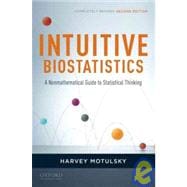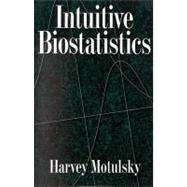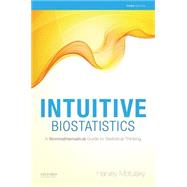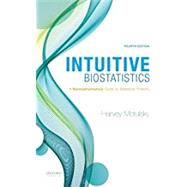Intuitive Biostatistics A Nonmathematical Guide to Statistical Thinking

Intuitive Biostatistics A Nonmathematical Guide to Statistical Thinking
- ISBN 13:
9780199730063
- ISBN 10:
0199730067
- Edition: 2nd
- Format: Paperback
- Copyright: 01/20/2010
- Publisher: Oxford University Press
- Newer Edition
Rent
Sorry, this item is currently unavailable.
Note: Supplemental materials are not guaranteed with Rental or Used book purchases.
Extend or Purchase Your Rental at Any Time
Need to keep your rental past your due date? At any time before your due date you can extend or purchase your rental through your account.
Summary
Thoroughly revised and updated, the second edition of Intuitive Biostatistics retains and refines the core perspectives of the previous edition: a focus on how to interpret statistical results rather than on how to analyze data, minimal use of equations, and a detailed review of assumptions and common mistakes. Intuitive Biostatistics, Completely Revised Second Edition, provides a clear introduction to statistics for undergraduate and graduate students and also serves as a statistics refresher for working scientists. NEW TO THIS EDITION: * Chapter 1 shows how our intuitions lead us to misinterpret data, thus explaining the need for statistical rigor. * Chapter 11 explains the lognormal distribution, an essential topic omitted from many other statistics books. * Chapter 21 contrasts testing for equivalence with testing for differences. * Chapters 22, 23, and 40 explore the pervasive problem of multiple comparisons. * Chapters 24 and 25 review testing for normality and outliers. * Chapter 35 shows how statistical hypothesis testing can be understood as comparing the fits of alternative models. * Chapters 37 and 38 provide a brief introduction to multiple, logistic, and proportional hazards regression. * Chapter 46 reviews one example in great depth, reviewing numerous statistical concepts and identifying common mistakes. * Chapter 47 includes 49 multi-part problems, with answers fully discussed in Chapter 48. * New "Q and A" sections throughout the book review key concepts.










